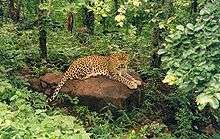Bhopal
| Bhopal | ||||||||
|---|---|---|---|---|---|---|---|---|
| capital | ||||||||
Clockwise from top Upper Lake, Vallabh Bhawan (MP Secretariat), Union Carbide Plant, Van Vihar, Birla Mandir, Taj-ul-Masajid | ||||||||
| Nickname(s): The City of Lakes | ||||||||
 Bhopal Location of Bhopal in the Central Indian state of Madhya Pradesh | ||||||||
| Coordinates: 23°15′N 77°25′E / 23.250°N 77.417°ECoordinates: 23°15′N 77°25′E / 23.250°N 77.417°E | ||||||||
| Country |
| |||||||
| State | Madhya Pradesh | |||||||
| District | Bhopal | |||||||
| Government | ||||||||
| • Type | Mayor–Council | |||||||
| • Body | Bhopal Municipal Corporation | |||||||
| • Mayor | Alok Sharma (BJP) | |||||||
| • Member of Parliament | Alok Sanjar (2014 - till date) | |||||||
| Area[1] | ||||||||
| • Metropolis capital | 685.88 km2 (264.82 sq mi) | |||||||
| Elevation | 527 m (1,729 ft) | |||||||
| Population (2011)[2] | ||||||||
| • Metropolis capital | 1,745,333 | |||||||
| • Rank | 17th | |||||||
| • Density | 3,887/km2 (10,070/sq mi) | |||||||
| • Metro | 1,864,389 | |||||||
| • Metro rank | 20th | |||||||
| Demonym(s) | Bhopali | |||||||
| Time zone | IST (UTC+5:30) | |||||||
| Pincode | 462001 to 462046 | |||||||
| Telephone | 0755 | |||||||
| Vehicle registration | MP-04 | |||||||
| Precipitation | 1,123.1 millimetres (44.22 in) | |||||||
| Avg. high temperature | 31.7 °C (89.1 °F) | |||||||
| Avg. low temperature | 18.6 °C (65.5 °F) | |||||||
| Website |
www | |||||||
Bhopal (/boʊˈpɑːl/; Hindustani pronunciation: [bʱoːpaːl]) is the capital of the Indian state of Madhya Pradesh and the administrative headquarters of Bhopal district and Bhopal division. The city was the capital of the former Bhopal State. Bhopal is known as the City of Lakes[3] for its various natural as well as artificial lakes and is also one of the greenest cities in India.[4] It is the 17th largest city in the country and 131st[5] in the world.
A Y-class city,[6] Bhopal houses various institutions and installations of national importance, including ISRO's Master Control Facility[7] and BHEL. Bhopal is home to the largest number of Institutes of National Importance in India, namely IISER, MANIT, SPA, and AIIMS. IIIT is proposed to be established in the city.
The city attracted international attention in December 1984 after the Bhopal disaster, when a Union Carbide India Limited (UCIL) pesticide manufacturing plant (now owned by Dow Chemical Company) leaked a mixture of deadly gases composed mainly of methyl isocyanate, leading to one of the worst industrial disasters in the world's history. The Bhopal disaster continues to be a part of the socio-political debate and a logistical challenge for the people of Bhopal.[8]
Bhopal has been selected as one of the first twenty Indian cities to be developed as a smart city under PM Narendra Modi's flagship Smart Cities Mission [9] and will be one of the first smart cities (placed within 1st round at 20th place)
History
Early history
According to folklore, Bhopal was founded in 11th century by the Paramara king Bhoja, who ruled from his capital at Dhar. This theory states that Bhopal was originally known as Bhojpal after a dam (pal) constructed by the king's minister.[1] No archaeological evidence, inscriptions or historical texts support the claim about an earlier settlement founded by Bhoja at the same place, although the Bhojeshwar Temple ascribed to him exists at Bhojpur, which is 28 km from Bhopal. An alternative theory says that the city is named after another king called Bhupala (or Bhupal).[10][11][12]
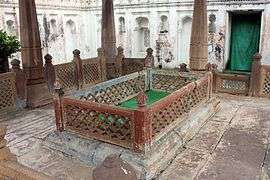
In the early 18th century, Bhopal was a small village in the Gond kingdom. The modern Bhopal city was established by Dost Mohammad Khan (1672–1728), a Pashtun soldier in the Mughal army.[13] After the death of the emperor Aurangzeb, Khan started providing mercenary services to local chieftains in the politically unstable Malwa region. In 1709, he took on the lease of Berasia estate and later annexed several territories in the region to establish the Bhopal State.[14] Khan received the territory of Bhopal from the Gond queen Kamlapati in lieu of payment for mercenary services and usurped her kingdom after her death.[15] In the 1720s, he built the Fatehgarh fort in the village, which developed into the city of Bhopal over the next few decades.
Begum rule
Bhopal became a princely state after signing a treaty with the British East India Company in 1818.[16] Between 1819 and 1926, the state was ruled by four women, Begums — unique in the royalty of those days — under British suzerainty. Qudsia Begum was the first woman ruler (between 1819-1837), who was succeeded by her granddaughter, Shah Jehan. Between the years 1844-1860, when Shah Jehan was a child, her mother Sikandar (only daughter of Qudsia) ruled as regent, and was then recognized as ruler in 1860. She ruled until 1868, when Shah Jehan succeeded her and was Begum until 1901. In 1901, Shah Jehan's daughter Kaikhusrau Jahan became Begum, ruled until 1926, and was the last of the female line of succession. In 1926, she abdicated in favor of her son, Hamidullah Khan, who ruled until 1947, and was the last of the sovereign Nawabs.The rule of Begums gave the city its waterworks, railways, a postal system, and a municipality constituted in 1907.[17]
Post independence
Bhopal State was the second-largest Muslim-ruled princely state: the first being Hyderabad. After the independence of India in 1947, the last Nawab expressed his wish to retain Bhopal as a separate unit. Agitations against the Nawab broke out in December 1948, leading to the arrest of prominent leaders including Shankar Dayal Sharma. Later, the political detainees were released, and the Nawab signed the agreement for Bhopal's merger with the Union of India on 30 April 1949.[18] The Bhopal state was taken over by the Union Government of India on 1 June 1949.
Bhopal disaster
On December 1984, a Union Carbide India Limited pesticide plant in Bhopal leaked around 32 tons of toxic gases, including methyl isocyanate (MIC) gas which led to the worst industrial disaster to date. The official death toll was initially recorded around 4,000. A Madhya Pradesh government report stated 3,787 deaths, while other estimates state the fatalities were significantly higher (16,000) from the accident and the medical complications caused by the accident in the weeks and years that followed. The higher estimates have been challenged.[19][20] The impact of the disaster continues to this day in terms of psychological and neurological disabilities, blindness, skin, vision, breathing, and birth disorders.[21][22][23] The soil and ground water near the factory site have been contaminated by the toxic wastes.[23][24] The Bhopal disaster continues to be the part of the socio-political debate; the clean-up of environmental contamination and rehabilitation of those affected continues to challenge the people of Bhopal.[8] December 3rd is annually observed as the official day of mourning, and every year, all government offices in Bhopal are closed.
Geography

Bhopal has an average elevation of 500 metres (1401 ft). Bhopal is located in the central part of India, and is just north of the upper limit of the Vindhya mountain ranges. Located on the Malwa plateau, it is higher than the north Indian plains and the land rises towards the Vindhya Range to the south. The city has uneven elevation and has small hills within its boundaries. The prominent hills in Bhopal are Idgah hills and Shyamala hills in the northern region, Katara hills in southern region. City's geography has in it two lakes namely upper lake and lower lake. Bhopal city is divided into two parts where one part which is near the VIP and lake is old Bhopal (north) and the other is where mainly malls are situated New bhopal (South).
| Bhopal | ||||||||||||||||||||||||||||||||||||||||||||||||||||||||||||
|---|---|---|---|---|---|---|---|---|---|---|---|---|---|---|---|---|---|---|---|---|---|---|---|---|---|---|---|---|---|---|---|---|---|---|---|---|---|---|---|---|---|---|---|---|---|---|---|---|---|---|---|---|---|---|---|---|---|---|---|---|
| Climate chart (explanation) | ||||||||||||||||||||||||||||||||||||||||||||||||||||||||||||
| ||||||||||||||||||||||||||||||||||||||||||||||||||||||||||||
| ||||||||||||||||||||||||||||||||||||||||||||||||||||||||||||
Climate
Bhopal has a humid subtropical climate, with cool, dry winters, a hot summer and a humid monsoon season. Summers start in late March and go on till mid-June, the average temperature being around 30 °C (86 °F), with the peak of summer in May, when the highs regularly exceed 40 °C (104 °F). The monsoon starts in late June and ends in late September. These months see about 40 inches (1020 mm) of precipitation, frequent thunderstorms and flooding. The average temperature is around 25 °C (77 °F) and the humidity is quite high. Temperatures rise again up to late October when winter starts, which lasts up to early March. Winters in Bhopal are cool, and not very much comfortable like summers, with average daily temperatures around 16 °C (61 °F) and little or no rain. The winter peaks in January when temperatures may drop close to freezing on some nights. Lowest temperature ever recorded was 0.3C. Total annual rainfall is about 1146 mm (46 inches).
| Climate data for Bhopal | |||||||||||||
|---|---|---|---|---|---|---|---|---|---|---|---|---|---|
| Month | Jan | Feb | Mar | Apr | May | Jun | Jul | Aug | Sep | Oct | Nov | Dec | Year |
| Record high °C (°F) | 33.0 (91.4) |
37.6 (99.7) |
40.7 (105.3) |
44.4 (111.9) |
46.0 (114.8) |
45.6 (114.1) |
41.2 (106.2) |
35.6 (96.1) |
37.4 (99.3) |
39.6 (103.3) |
35.3 (95.5) |
32.8 (91) |
46 (114.8) |
| Average high °C (°F) | 25.3 (77.5) |
28.3 (82.9) |
33.5 (92.3) |
38.3 (100.9) |
40.7 (105.3) |
37.2 (99) |
30.7 (87.3) |
28.9 (84) |
30.5 (86.9) |
32.0 (89.6) |
28.9 (84) |
26.0 (78.8) |
31.7 (89.1) |
| Average low °C (°F) | 10.5 (50.9) |
12.4 (54.3) |
17.1 (62.8) |
21.8 (71.2) |
25.7 (78.3) |
25.4 (77.7) |
23.2 (73.8) |
22.5 (72.5) |
21.6 (70.9) |
18.5 (65.3) |
14.2 (57.6) |
10.9 (51.6) |
18.6 (65.5) |
| Record low °C (°F) | 0.6 (33.1) |
1.7 (35.1) |
6.1 (43) |
12.2 (54) |
16.7 (62.1) |
19.5 (67.1) |
19.0 (66.2) |
16.8 (62.2) |
13.8 (56.8) |
11.7 (53.1) |
6.1 (43) |
1.0 (33.8) |
0.6 (33.1) |
| Average precipitation mm (inches) | 13.2 (0.52) |
8.7 (0.343) |
8.4 (0.331) |
4.3 (0.169) |
11.7 (0.461) |
120.2 (4.732) |
354.1 (13.941) |
363.3 (14.303) |
185.1 (7.287) |
31.0 (1.22) |
12.1 (0.476) |
11.0 (0.433) |
1,123.1 (44.216) |
| Source: [25][26] | |||||||||||||
Demographics
According to the 2011 census, the population of the Bhopal city (the area under Bhopal Municipal Corporation) is 1,798,218, with 936,168 males and 862,050 females. The population of the Bhopal metropolitan area (the urban agglomeration that extends beyond Bhopal city) was 1,886,100 in 2011.[28] The total effective literacy rate (for population aged 7+ years) was 85.24%, with male and female literacy respectively at 89.2% and 80.1%.[1]
Out of Bhopal's total population in 2001, 1.34 million were Hindus (73%), 420,000 were Muslims (23%), and rest were Jains, Christians, Buddhists, Sikhs and others.[27]
Cityscape
Nature

Bhimbetka Caves are about 35 kilometres from Bhopal city. They have evidence of dwellings of pre-historic man during the Paleolithic era. Rock paintings in the caves are specimens of pre-historic settlements in India. There are about 600 caves, but only 12 are open for visitors. The caves are located in the midst of sal and teak forests. They were discovered by Wakankar in 1957. UNESCO declared Bhimbetka Caves as a World Heritage Site in 2003.[30]
Activity centres
Regional Science Centre is a science museum located on the picturesque Shyamala Hills. It houses about 300 science exhibits in ‘Invention’ and ‘Fun Science’ galleries. ‘Taramandal’ and Planetarium at the centre helps the students and enthusiasts study the astral and mysterious world of stars, galaxies and the universe. Stargazing sessions are organised at the planetarium.
The Museum of Mankind in Bhopal exhibits tribal and folk houses from all corners of India.[31]
Culture
Bharat Bhavan is the main cultural centre of the city. It has an art gallery, an open-air amphitheater facing the Upper Lake, two other theatres and a tribal museum.
Diwali and Eid are major festivals in Bhopal. Gifts and sweets are exchanged and donation are made to the poor. Diwali is celebrated by worshiping the wealth goddess Lakshmi. Eid is special to the city as all the Hindus take time out to visit their Muslim friends and greet them and get treated with delicacies, the specialty of the day being sweet sewaiya. Bhopali culture is such that both Hindus and Muslims visit each other on their respective festivals to greet and exchange sweets. During Ganesh puja and Durga Puja (Navratras), idols of Ganesh and Durga are established in jhankis throughout the city. People throng to offer prayers to their deities. At the end of Navratras, on the day of Vijayadashami (or Dussehra), huge effigies of Ravan are burnt in different parts of the city. Some of them are organised by the local administration and stand as tall as 18 metres (59 ft).
Bhopal Ijtema is an annual Muslim world preachers congregation, is held at Ghasipura 11 km from Bhopal. The congregation is said to be one of the largest Islamic gathering other than Hajj at Mecca in Saudi Arabia and "Bishwa Ijtima" at Tongi in Bangladesh. The annual congregation near Bhopal attracts between 500,000 and 1,000,000 Muslims from all over the globe.[32]
Economy
The major industries in the old city are electrical goods, medicinal, cotton, chemicals and jewellery. Other industries include cotton and flour milling, cloth weaving and painting, as well as making matches, sealing wax, and sporting equipment.[33] The residents of Bhopal also engage in large retail businesses. Handicrafts, like zardozi and batua (a small string purse, usually used with Indian traditional dresses) are some of the products of the Old City.[34]
Bhopal is also home to the DB Corp, informally called the Bhaskar Group (named after its major publication Dainik Bhaskar), a ₹17 billion business conglomerate with strong presence in media. Its head office is located in Maharana Pratap Nagar. Manjul Publishing House, located in the old city, is a major publishing house made famous by the translation of the Harry Potter series of novels into Hindi.[35]
Industries
- Bharat Heavy Electricals Limited, the largest engineering and manufacturing enterprise in India, has a unit in Bhopal. It occupies a large area in the Eastern Part of the city and maintains a suburb named after it. A majority of the residents of the BHEL Suburb are employed by the unit.
- Mandideep is an industrial suburb of Bhopal. It is located to the south of the city on the NH 12.[36] Mandideep's total exports are worth some 2,300 crore rupees ($500m; £300m) per year, making it the largest industrial area in Madhya Pradesh. The town is home to Hindustan Electo Graphite (HEG), owning the largest graphite electrode plant in the world and is the largest industrial company in the entire state. Hindustan Electro Graphite (HEG) and Lupin Laboratories ltd. are the dominant companies in the suburb, each exports worth around 900 crore rupees.[37] Apart from that, Mandideep also houses the manufacturing plant of Makson group of company, Eicher Tractors for the oldest tractor manufacturers in India.
Education
Basic education
Bhopal has more than 550 state-sponsored schools, which are affiliated to the Madhya Pradesh Board of Secondary Education (MPBSE). In addition, there are five Kendriya Vidyalayas in the city, affiliated to the Central Board of Secondary Education (CBSE). The city is also served by numerous other private schools affiliated to either CBSE or MPBSE.
Some schools are also affiliated to National Institute of Open Schooling (NIOS) and ICSE Board, Institution Of Secondary Distance Education (ISDE) or Private Non-Governmental Board of School Education.
Higher education
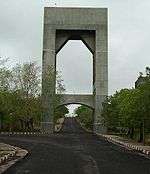
Bhopal is the home of many universities and national Institutes. The institutes and universities headquartered in the city include
| No. | Institute | Founded |
|---|---|---|
| 1 | Maulana Azad National Institute of Technology | 1960 |
| 2 | Barkatullah University | 1970 |
| 3 | Madhya Pradesh Bhoj Open University | 1991 |
| 4 | National Law Institute University (NLIU) | 1997 |
| 5 | Rajiv Gandhi Proudyogiki Vishwavidyalaya | 1998 |
| 6 | Makhanlal Chaturvedi National University of Journalism and Communication | 1990 |
| 7 | Indian Institute of Science Education and Research, Bhopal (IISERB) | 2008 |
| 8 | National Institute of Fashion Technology (NIFT) | 2008 |
| 9 | All India Institute of Medical Science (AIIMS) | 2012 |
| 10 | National Judicial Academy (NDA) | 1993 |
| 11 | Indian Institute of Forest Management (IIFM) | 1982 |
| 12 | School Of Planning And Architecture (SPA) | 2008 |
Civic Administration
Bhopal Municipal Corporation is the urban civic body which oversees the needs of Bhopal city. The municipal corporation is spread over an area of 285.88 km2 (110.38 sq mi).[1] The city is divided into 85 wards. Each ward elects a corporator. The winning party elects a council of members, who are responsible for various departments.
Bhopal Municipal Corporation was ranked 3rd out of 21 Cities for best governance and administrative practices in India in 2014.[38] It scored 3.7 on 10 compared to the national average of 3.3.[39] The present mayor of the city is Alok Sharma.[40] Chhavi Bhardwaj is the municipal commissioner of the city.[41]
Government and politics
It houses the State Legislative Assembly, or the Vidhan Sabha, which seats 230 members of Legislative Assembly. The thirteenth (and current) Vidhan Sabha was elected in May 2013.[42] As of February 2016, the party in the majority in Vidhan Sabha is Bharatiya Janata Party (BJP) with 166 seats[43] which is led by Shivraj Singh Chouhan. Bhopal district elects seven seats to the Assembly.
Transport
Air
The Raja Bhoj International Airport is located near the suburb of Bairagad and is the primary airport serving the state of Madhya Pradesh, India.[44]
There are three routes or ways to reach the airport: (1) Via Bairagad, (2) Via Panchvati, (3) Via Gandhi nagar road (N.H 12). From within the city, VIP Road, a four lane road takes one to the airport, which lies 15 km to the north of the city. International flights began operations in 2010. Domestic direct flight services are operated by Jet Airways, JetKonnect and Air India. As of July 2016, Bhopal had non-stop flights to New Delhi, Mumbai, Jabalpur and Raipur and direct flights to Pune and Hyderabad. There is only one international flight from Bhopal and that is to Jeddah, Saudi Arabia and is used mainly by Hajj pilgrims.[45]
Rail
Bhopal lies in the West Central Railway Zone. Considering both North-South and East-West train routes, it is one of the most rail connected cities in India which halts more than 200 daily trains, with a total of more than 380 trains within a week. The main stations of Bhopal are the Bhopal Junction station located in old Bhopal as well as Bhopal Habibganj station located in new Bhopal. Both of the stations are equipped with WiFi, has enough waiting halls, refreshment center, passenger ticket counter and ticket vending machines, vehicle parking, communication facility, sanitary facility and dedicated Government Railway Police force to ensure security. Altogether the city has six railway stations within its city limits.
The Bhopal Junction station as well as Bhopal Habibganj station are selected along with 47 other railway stations to emerge as The World Class Railway Station. While the work has already started on development of Bhopal Habibganj as the first world class railway station of India.[46] The Bhopal Junction and Bhopal Habibganj have already received ISO 9001:2000 CERTIFICATE.
Bhopal railway stations with their station code and details:
| Station name | Station code | Railway zone | Total platforms | Important trains |
|---|---|---|---|---|
| Bhopal Junction | BPL | West Central Railway | 6 | |
| Bhopal Habibganj | HBJ | West Central Railway | 5 | |
| Bhopal Bairagarh | BIH | Western Railway | 2 | |
| Bhopal Misrod | MSD | West Central Railway | 2 | |
| Bhopal Sukhisewania | BSSN | West Central Railway | 3 | |
| Bhopal Mandideep | MDP | West Central Railway | 2 |
The Bhopal Junction station houses the Divisional Railway Managers (DRM) head office under Central railways.
Roads and Highways
.jpg)

National Highway No.12 passes through Bhopal which connects it to Jabalpur in the East and Jaipur in the West. National Highway 86 connects Bhopal to Sagar in the East to Dewas & Ujjain in the West. State Highway 17 connects the city with Indore.
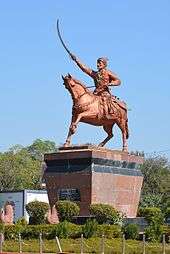
An interstate bus terminus is located near the Habibganj railway station,[47] called the Kushabhau Thakre Inter State Bus Terminal which was inaugurated in 2011.[48]
Bhopal BRTS
Bhopal has Bus Rapid Transit System, which became functional from the year 2013. Bhopal City Link Limited (BCLL) is responsible to connect the whole City by a well planned bus network. The company has identified 4 trunk and 8 standard routes in the city on which 225 buses would be operated daily (365 a day in a year), from 5 a.m. to 11 p.m. 82 Bus Stops are built along the 24 km long corridor. These Bus-Stops have Display-Boards with the information of incoming Buses and siting arrangements has been made for the passengers. A 2-door system will help safe ride for the passengers, where one door will open only when the Bus arrives and another door will open only if the person carries a valid ticket.[49]
Metro Rail
A metro rail project is under planning for the city. [50]
Teams
Bhopal Badshahs is a hockey team based in Bhopal that plays in World Series Hockey. The team is captained by Indian hockey player Sameer Dad and coached by Vasudevan Bhaskaran who was the captain of India's Olympic victory in 1980 Summer Olympics in Moscow. Badshahs defeated Chandigarh Comets in the inaugural match of 2012 World Series Hockey 4-3. Aishbagh Stadium in Bhopal is the home ground of Bhopal Badshahs.
Stadiums
- Aishbagh Stadium is a field hockey stadium in Bhopal. It has a seating capacity of more than 10,000 people.
- TT Nagar Stadium is a multi-purpose stadium is Bhopal.
Notable people from Bhopal
- Shankar Dayal Sharma - 9th President of India
- Abdul Hafiz Mohamed Barakatullah - Revolutionary
- Aslam Sher Khan - National Hockey Player and Member Of Parliament.
- Eisha Singh - Actress
- Najma Heptulla - Union Minister
- Raghuram Rajan - 23rd Governor Of RBI
- Shawar Ali - Actor
- Javed Akhtar - Poet and Lyricist graduated from Saifia College, Bhopal
- Divyanka Tripathi - Actress
- Kaif Bhopali - Poet and Lyricist
- Asad Bhopali - Poet and Lyricist
- Manzoor Ahtesham - Writer and Padma Shri award recipient
- Mansoor Ali Khan Pataudi - Former Captain of the India national cricket team
- Sara Khan (TV actress)
- Shahryar Khan - Chairman of Pakistan Cricket Board
- Annu Kapoor - Actor, TV Presenter and National Film Award Winner
- Kailash Chandra Joshi - Former Chief Minister of Madhya Pradesh
- Abdul Qadeer Khan - Pakistani nuclear physicist
- Manzar Bhopali - Urdu Poet
- Shoaib Ibrahim - TV Actor
- Sameer Dad - National Hockey Player
- Jalaluddin Rizvi - National Hockey Player and Arjuna Award winner
- Anees Ahmed - Lawyer in United Nations Peacekeeping Operations and United Nations International Criminal Tribunals
- Jaya Bachchan - Actress
See also
- Bhopal (Lok Sabha constituency)
- Category:People from Bhopal
- Regional Museum of Natural History, Bhopal
References
- 1 2 3 4 "District Census Handbook - Bhopal" (PDF). Census of India. p. 14,26. Retrieved 22 September 2015.
- ↑ "Bhopal District Census Handbook" (PDF). Office of the Registrar General & Census Commissioner. Retrieved 10 June 2016.
- ↑ Educational Britannica Educational (1 July 2010). The Geography of India: Sacred and Historic Places. The Rosen Publishing Group. pp. 174–. ISBN 978-1-61530-202-4. Retrieved 15 April 2012.
- ↑ Green (28 January 2010). "MSN's 8 green cities of India – 7 – Green News – Article – MSN India". Green.in.msn.com. Archived from the original on 28 December 2009. Retrieved 2010-07-26.
- ↑ "The world's largest cities". City Mayors. Retrieved 16 August 2013.
- ↑ "Re-classification of cities/towns on the basis of 2001 Census" (PDF). Ministry of Finance - Government of India. 18 November 2004. Retrieved 12 February 2017.
- ↑ "ISRO Master Control Facility". Archived from the original on 30 September 2007. Retrieved 2007-03-27.
- 1 2 Government braces for disposal of Carbide waste at Pithampur The Times of India, 21 May 2014
- ↑ "Why only 98 cities instead of 100 announced: All questions answered about smart cities project". 28 August 2015. Retrieved 25 November 2016.
- ↑ Pranab Kumar Bhattacharyya (1977). Historical Geography of Madhya Pradesh from Early Records. Motilal Banarsidass. p. 275. ISBN 978-0-8426-9091-1.
- ↑ CPI joins campaign against naming Bhopal as Bhojpal. Daily Bhaskar,16 March 2011.
- ↑ Ashfaq Ali (1981). Bhopal, Past and Present. Jai Bharat. p. xxix.
- ↑ John Falconer, James Waterhouse (2009). The Waterhouse albums: central Indian provinces. Mapin. ISBN 978-81-89995-30-0.
- ↑ Khan 2000, p. 11.
- ↑ Kamla Mittal (1990). History of Bhopal State. Munshiram Manoharlal. p. 2. OCLC 551527788.
- ↑ Khan 2000, p. 68.
- ↑ "BMC History". 15 May 2007. Archived from the original on 12 April 2007. Retrieved 2007-06-12.
- ↑ S.R. Bakshi and O.P. Ralhan (2007). Madhya Pradesh Through the Ages. Sarup & Sons. p. 360. ISBN 978-81-7625-806-7.
- ↑ Eckerman, Ingrid (2005). The Bhopal Saga—Causes and Consequences of the World's Largest Industrial Disaster. India: Universities Press. ISBN 81-7371-515-7.
- ↑ Carol Wood, The Bhopal Saga: Causes and Consequences of the World’s Largest Industrial Disaster, Environ Health Perspect., May 2005; 113(5): A344
- ↑ ALTAF QADRI (3 December 2009). "Victims of Bhopal Mark Anniversary". Time. Archived from the original on 9 June 2011.
- ↑ Lakhani, Nina (29 November 2009). "Bhopal: The victims are still being born". The Independent. London. Archived from the original on 3 December 2009. Retrieved 30 November 2009.
- 1 2 "Bhopal marks 25 years since gas leak devastation". BBC News. 3 December 2009. Archived from the original on 7 June 2010. Retrieved 2010-04-26.
- ↑ "Subterranean Leak". Archived from the original on 2010-04-18.
- ↑ "Bhopal Climatological Table 1949–2000" (PDF). Indian Meteorological Department. Archived from the original (PDF) on 13 April 2015. Retrieved 21 January 2015.
- ↑ "Extremes of India" (PDF). Indian Meteorological Department. Archived from the original (PDF) on 21 May 2013. Retrieved 21 January 2015.
- 1 2 Baseline Survey of Bhopal District, Madhya Pradesh Ministry of Minority Affairs, Government of India (2012)
- ↑ "Presentation on Towns and Urban Agglomerations". Census of India 2011. Archived from the original on 14 March 2016. Retrieved 13 March 2016.
- ↑ Rock Shelters of Bhimbetka UNESCO
- ↑ "Rock Shelters of Bhimbetka". World Heritage Site. Archived from the original on 8 March 2007. Retrieved 2007-02-15.
- ↑ A House of Tribal Tradition- Bhopal India Today
- ↑ Bhopal, Ijtema. "Ijtema".
- ↑ "Bhopal industries". Retrieved 2007-04-10.
- ↑ "Zari and Batua". Archived from the original on 6 April 2007. Retrieved 2007-04-12.
- ↑ Kumar Shakti Shekhar (10 July 2005). "Chamber of Secrets translated into Hindi". NDTV. Bhopal. Archived from the original on 5 December 2008. Retrieved 30 October 2015.
- ↑ "Association of Industries - MANDIDEEP". mandideep.com.
- ↑ Madslien, Jorn (2 December 2009). "Industrial success fails to lift Bhopal". BBC News. Archived from the original on 10 June 2010. Retrieved 2010-07-26.
- ↑ "Home - Bhopal Municipal Corporation". Retrieved 25 November 2016.
- ↑ Nair, Ajesh. "Annual Survey of India's City-Systems" (PDF). Janaagraha Centre for Citizenship and Democracy. Retrieved 6 March 2015.
- ↑ "Bhopal Mayor". Bhopal Municipal Corporation. Retrieved 31 October 2015.
- ↑ Anil Gupta (6 April 2016). "तेजस्विनी नायक की विदाई, छवि भारद्वाज BMC की नई कमिश्नर, देखें लिस्ट". Bhaskar (in Hindi).
- ↑ "Madhya Pradesh Vidhan Sabha". Archived from the original on 27 February 2007. Retrieved 2007-03-08.
- ↑ "MP: BJP’s Narayan Tripathi wins Maihar bypoll". Retrieved 2016-07-18.
- ↑ "Indore, Bhopal to have international connectivity soon". ZeeNews.com. 15 January 2008. Retrieved 2011-06-19.
- ↑ "Air India to run flights from Bhopal to Pune, Hyderabad". indiatoday.intoday.com. 10 May 2016. Retrieved 2016-07-20.
- ↑ "India will soon have world class railway stations: Railway Ministry". Retrieved 25 November 2016.
- ↑ "Interstare Bus Terminus". Archived from the original on 26 May 2007. Retrieved 2007-03-16.
- ↑ "ISBT starts services, passengers face inconvenience". Daily Pioneer. 2 September 2011. Retrieved 2012-04-16.
- ↑ "BRTS in Bhopal to be completed by Feb 2011, says Gaur". ZeeNews.com. 30 March 2010. Archived from the original on 13 July 2010. Retrieved 2010-07-26.
- ↑ "Bhopal, Indore to have Metro Rail soon". Thaindian News.
Further reading
- Sinha, Indra (2007). Animal's People. Simon & Schuster. ISBN 978-1-4165-7878-9.
- Lapierre, Dominique (2002). Five Past Midnight in Bhopal. Warner Books. ISBN 0-7432-2035-8.
- Khan, Shaharyar (2000). Begums of Bhopal, A Dynasty of Women Rulers in Raj India (illustrated ed.). I.B.Tauris. ISBN 978-1-86064-528-0.
- Singh, J.P. (1998). City Planning in India: A Study of Land Use of Bhopal. Mittal Publications, India. ISBN 81-7099-705-4.
- Shrivastava, Paul (1987). Bhopal: Anatomy of a Crisis. Paul Chapman, London.
- Howgh, William (2006). A Brief History Of The Bhopal Principality In Central India. Hesperides Press. ISBN 1-4067-1225-6.
- Mittal, Kamal (1990). History of Bhopal State: Development of Constitution, Administration and National Awakening, 1901–1949. South Asia Books. ISBN 99903-0-915-9.
- D'Silva, Themistocles (2006). The Black Box of Bhopal. Trafford Publishing. ISBN 1-4120-8412-1.
External links
| Wikimedia Commons has media related to Bhopal. |
| Wikivoyage has a travel guide for Bhopal. |
| Wikiquote has quotations related to: Bhopal |
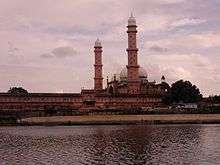

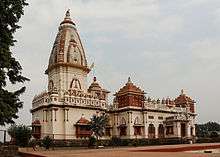
_at_Van_Vihar_National_Park.jpg)
